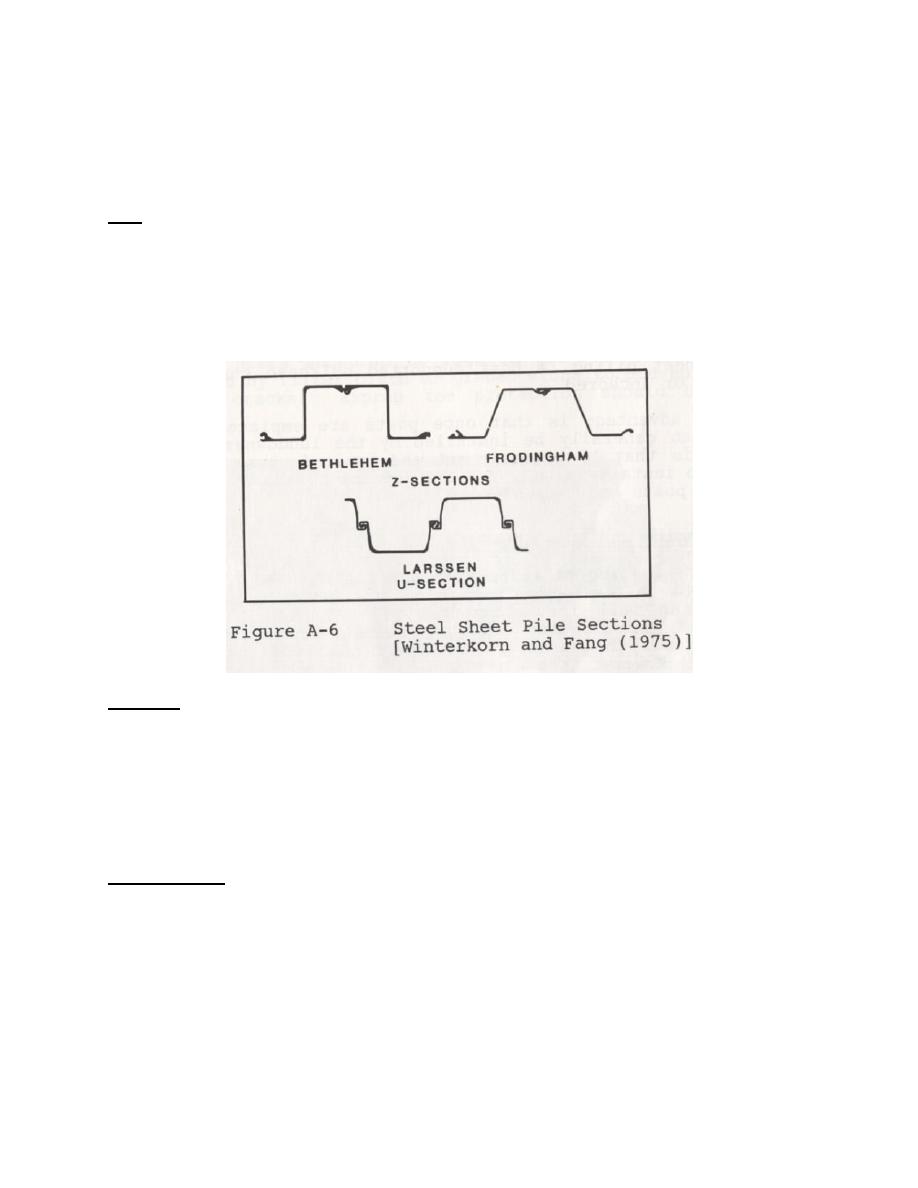
Minimize the number of washers under bolt heads and nuts to reduce the length of exposed bolt
shanks and provide a tight fit between bolted timbers so that bolt shanks are not exposed in the gaps.
Bolt holes should be no more than 1/16 of an inch larger than the bolt shank to insure a tight fit.
Steel
Steel sheet piling, probably the most widely used bulkhead material, can be driven into hard, dense
soils and soft rock (Figure A-6). The interlocking feature of sheet pile sections provides a relatively
sand-tight fit, generally precluding the need for filters. The close fit may also be essentially water-tight,
so regularly spaced weep holes are recommended. These and lifting holes in the piling should be backed
with properly graded stone filters or filter fabric to prevent loss of backfill.
Aluminum
Aluminum sheet piling, which comes in sections similar to steel sheet sections shown in Figure A-
6, is designed and installed using the same conventional methods and equipment. Its primary advantages
over steel are lighter weight and superior corrosion resistance. Individual sheets can be carried and
maneuvered by one man, and most drilling and cutting can be performed with simple hand tools. Its
main disadvantage, compared to steel, is that it is less rugged when driven and cannot penetrate logs,
rock, or other hard obstructions.
Asbestos-Cement
This material seems to suffer significant and rapid deterioration in a marine environment and
should not be used when long service is desired.
POST SUPPORTED BULKHEADS
Wave Height Range: Below five feet.
92




 Previous Page
Previous Page
